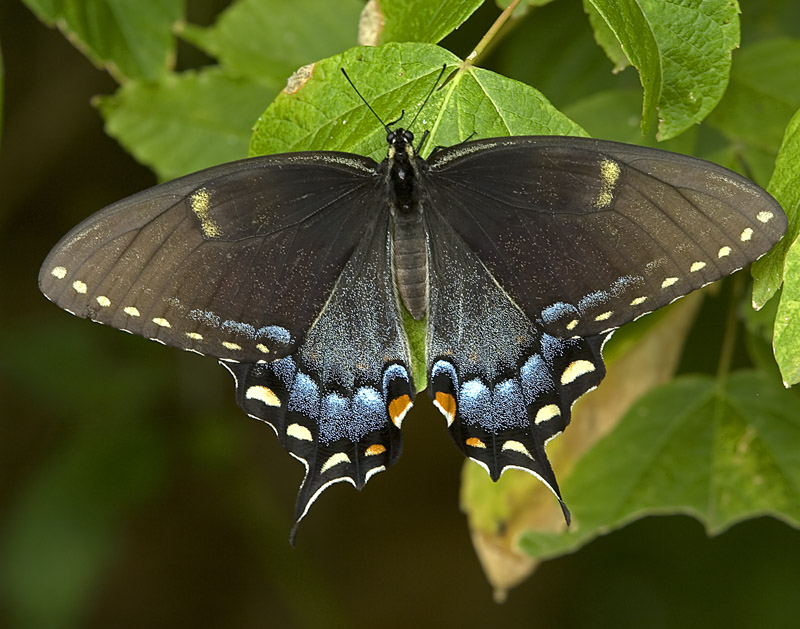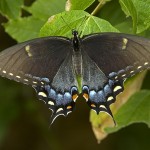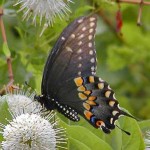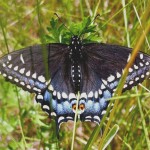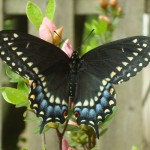Black Swallowtail facts
Scientific Classification of Black Swallowtail: Papilio Polyxenes
Kingdom of Black Swallowtail: Animalia
Phylum of Black Swallowtail: Arthropoda
Class of Black Swallowtail: Insecta
Order of Black Swallowtail: Lepidoptera
Family of Black Swallowtail: Papilionidae
Genus of Black Swallowtail: Papilio
Species of Black Swallowtail: P polyxenes
These species are stunningly beautiful. They might resemble some other breeds of the butterfly but they have certain ‘beauty spots’ that makes them stand apart in the crowd of look-alikes. Moreover black swallowtail is also known as Parsnip Swallowtail, Eastern Black Swallowtail or the American Swallowtail.
Pictures of Black Swallowtail
We present some selective lovely colorful pictures of these species
Some Exciting Facts about Black Swallowtail
- One could mistakenly take these species to be either the Giant swallowtail or the Pipevine. However, these categories of species bear some dots in the lower portion of the wings. They usually form spots within an orange circle and thus distinguish them from other likes.
- These species become weak and cannot defend themselves once they are in the grasp of their predators.
Distribution of Black Swallowtail
One can spot these species in the eastern parts of Rockies of North America. Additionally, they are also found in the northern portion of the South America and also in some parts of Australia.
Description of Black Swallowtail
- Color of Black Swallowtail: It is easy to discriminate among the males and the females of these species through the color of their bodies. In males, certain yellow dots are arranged in rows on the body. In case of the females, the spots are somewhat mild. These species also have an orange colored circle garnished with black colored spots. These orange colored circles are mostly found on the hind wings.
- Wingspan of Black Swallowtail: The size of the wingspan is about 4 and half inches on an average.
Behavior of Black Swallowtail
Peculiar behavioral features of the swallowtail have been noted as below:
- These species are somehow considered to be down to earth creatures.
- The black swallowtail is a clever creature and is often found to be copying other species to fool their predators.
- It is seen that in the caterpillar stage they like to have leaves in their diet while in the butterfly stage they usually like to have the nectar from flowers
Food Habits of Black Swallowtail
In the juvenile stage they thrive on the parsley, fennel, dill etc. These species, in their butterfly stage, feed on the nectar from the flower.
Habitats of Black Swallowtail
These species are actually found in the fields, suburban areas, roadsides and meadows.
Life Cycle and Reproduction Range of Black Swallowtail
After going through various stages of life, these species actually reach the stage of adult. Infact this is the most adoring stage in the life of these species. Take a tour of the various stages in the life cycle of these species:
- Stage of Egg: The female counterparts usually lay eggs just after the mating.
- The time taken for the eggs to hatch is near about 3 to 5 days.
- Stage Of caterpillar: The second stage that follows is the caterpillar. During this period, these species begin to eat.
- Stage of Pupa: Once these species achieve the full length, the larvae endeavors to sleep in the cocoon and transformed into pupa. Infact this is the final stage of the development of the butterfly and its life cycle.
- Final Stage Butterfly: After a fortnight, these caterpillars develop into colorful and matured butterflies.
Adaptations of Black Swallowtail
The adaptive characteristics of these species are quite an interesting read. Here we mention just a few astonishing ones.
- These species have a habit of copying other Pipevine Swallowtail. This is because their predators usually do not like to feed on the Pipevine hence they try to avoid danger.
- The caterpillars of these species suck one kind of oil from the nectar of the flowers. The smell and strong flavors present n such oil nectar prevents the birds from coming near them. Thus they prevent themselves from getting preyed on.
- In case of these species the stage of caterpillar is visible in brown or green color. These species of the butterfly family also intend to disguise in the twigs and leaves to protect them from their predators.
Predator of Black Swallowtail
The predators of these species are mainly:
- Small birds
- Spiders
- Insects
Similar Species of Black Swallowtail
Following are the list of the similar species branching out from Black Swallowtail:
- The Old World Swallowtail
- Pipevine Swallowtail Butterfly
- Spicebush Swallowtail Butterfly
- Short tailed Swallowtail Butterfly
Caring Of Black Swallowtail
One could easily pet these species and adorn their houses with their beauty. These are one of the least troublesome creatures to pet and require minimum care and precaution. Moreover, it is even interesting to observe these species growing.
- Proper Housing: One should bring the desired mother plant for these species. Once the plant is in place, the caterpillar can be kept on the plant. The plant needs to be covered properly in the net, lest the caterpillar should escape. One should bring a pesticide free plant else the plant needs to be properly washed in water before residing the caterpillar on the same.
- Proper Feeding: The caterpillar should thrive on the mother plant and grow up normally.
- Proper Caring: One should make sure to get a hanging plant for all those caterpillars. It is advisable that the plant is not put on a table. The caterpillar might just accidentally climb over it. Another thing worth noting is that the rope or chain used for hanging should be powerful enough.
Life Span of Black Swallowtail
The life span in case of these species is simply a fortnight.
Conservation Status of Black Swallowtail
These species are listed in the category of least important in the endangered list.
